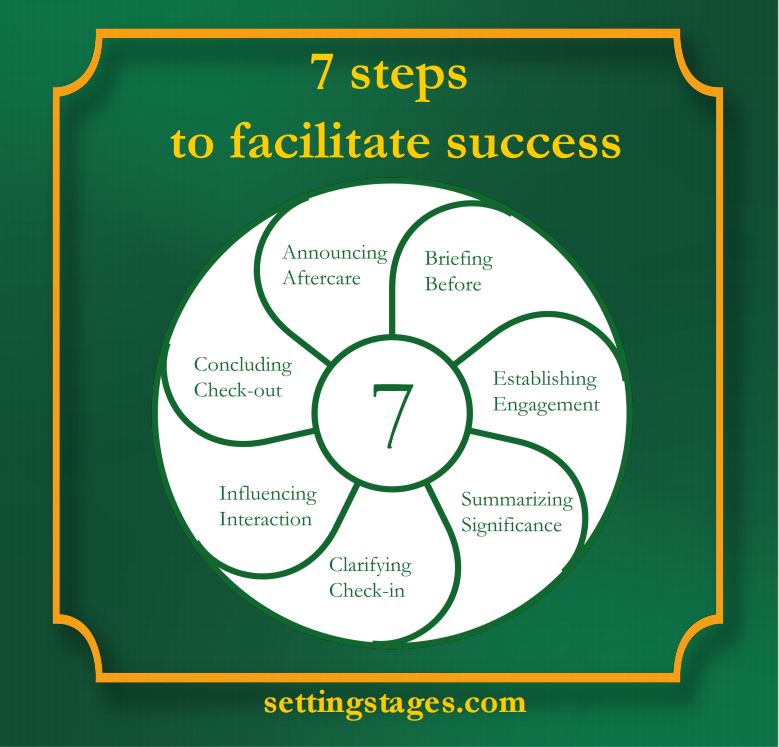
Whether you’re hosting a team retrospective, leading a strategy session, or guiding a workshop—your role as a facilitator can make or break the experience. Great facilitation isn’t about controlling the room. It’s about creating the conditions for success.
Over the years, I’ve refined a simple yet powerful approach to structuring any session—from kickoff to close. These 7 steps help ensure clarity, engagement, and real outcomes that stick:
- Briefing Before
- Establishing Engagement
- Summarizing Significance
- Clarifying Check-in
- Influencing Interaction
- Concluding Check-out
- Announcing Aftercare
Let’s walk through them:
1. Briefing Before: Clarity Is Kind
Before the session even starts, success begins with preparation. This is where you make sure three things are crystal clear:
- Goal: What is the purpose of this meeting?
- Agenda: What will we do, and in what order?
- Participants: Who is involved, and why?
When these elements are communicated upfront, people come in knowing what to expect—and why they’re there. No more “Could this have been an email?” energy.
2. Establishing Engagement: Set the Tone
Start strong. Before diving into content, pause and create shared expectations. This is the moment to:
- Agree on rules of engagement (e.g., one mic, no multitasking)
- Set the tone for how we’ll work together (e.g., psychological safety, open dialogue)
This step signals: This is a safe space. We’re here to co-create, not just consume.
3. Summarizing Significance: Why This Matters
Before you go into the details, zoom out. Help people understand the why:
- Why is this meeting important?
- What is the expected outcome?
- Why is everyone’s contribution essential?
When people see the relevance and stakes, they’re more likely to show up—not just physically, but mentally and emotionally too.
4. Clarifying Check-in: Let People Land
Life is busy. Minds wander. So take a moment to help everyone arrive.
A short check-in—whether it’s a simple round of “one word on how you’re arriving” or a quick pulse-check—helps participants shift gears and become present. It creates connection and readiness.
5. Influencing Interaction: Say No to Infodumps
The quickest way to lose a room? A one-way monologue.
Great facilitation means turning your meeting into a conversation, not a download. That could mean breakout discussions, open questions, polls, sticky notes—whatever suits the group and the goal.
People remember what they’re part of. So let them take part.
6. Concluding Check-out: Name It and Celebrate It
Wrap up by making the invisible, visible:
- What did we achieve?
- What decisions were made?
- What are the next steps?
- What did we learn?
Then—no matter how big or small—say thank you. At the very least for their time, ideally for their effort, honesty, or presence. Appreciation fuels motivation.
7. Announcing Aftercare: Don’t Ghost Your Group
Last but not least—close the loop.
Let participants know:
- What follow-up is coming
- When and how they’ll receive it
- Who owns what actions or decisions
And then (this is the kicker): actually follow through. Great facilitators don’t disappear—they guide the momentum forward.
Wrapping Up
Facilitation isn’t about charisma or clever slides. It’s about structure that supports connection. These 7 steps can help you host meetings where people feel seen, the work moves forward, and the energy is real.
✨ Because when facilitation is intentional, meetings become moments that matter.
